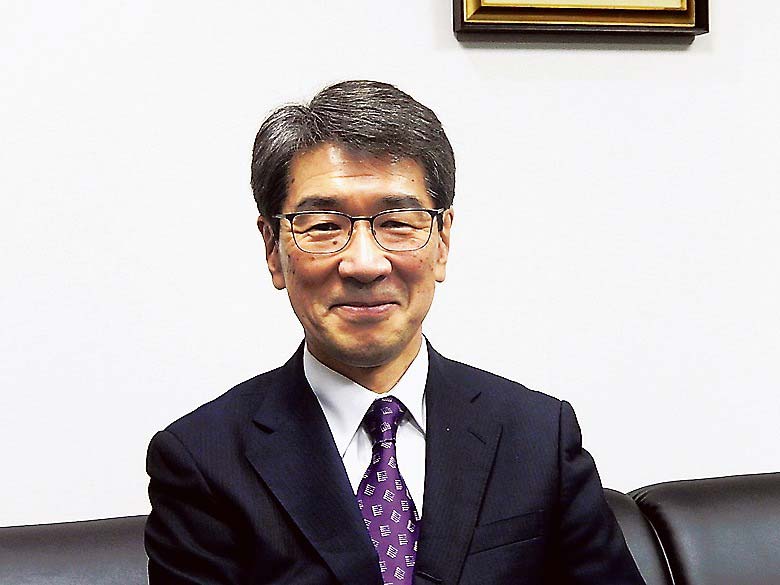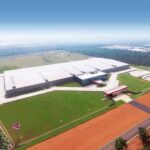ASIA ELECTRONICS INDUSTRYYOUR WINDOW TO SMART MANUFACTURING
AI, New Mega Trends to Stir Manufacturing Investments
Since its establishment in 1940, TOKYO OHKA KOGYO CO., LTD. (TOK) has consistently pursued research and development programs and new technical methodologies. Particularly, the company makes use of its four management principles. These principles are “continue efforts to enhance technology,” “raise the quality levels of products,” “contribute to society” and “create a frank and open-minded business culture”.
Most importantly, the company focuses on developing highly functional and high-performance products, which are not only cost-effective but also employ efficient manufacturing process technologies.
AEI recently interviewed Noriaki Taneichi, President and Chief Executive Officer of TOKYO OHKA KOGYO and shared his views on the prevailing market trends and strategies the company will employ in the future.

AEI:Can you share your thoughts on the prevailing semiconductor market and semiconductor materials market?
Taneichi: Recently, since 2023, the markets have been slowing down. At the same time, the recent semiconductor market trend shows a recovery in demand for memories. In addition, we have been seeing the same with logic devices, such as in the generative artificial intelligence (AI)-related sector. As this sector requires advanced package technologies as well, I expect that it will become a trigger for the demand recovery for semiconductors.
Pertaining to the semiconductor materials market, the timing of bottoming out is not yet in sight. Nonetheless, I don’t think a situation like a bottom in boom-and-bust cycles of the semiconductor industry at one time will occur.
Previously, at the bottom of chip cycles, demand significantly dropped. Presently though, the demand is not falling. Demand for legacy semiconductors and power devices remains strong. I don’t think the volatility of today’s chip cycle is as bad as in the past. Although the demand for chips for smartphones is sluggish, we can expect the demand for repurchases to increase sooner or later.
In the coming five years, we can expect many new and additional semiconductor plants to rise again. When these plans start off, the semiconductor industry will become very busy again.
Strategies, Manufacturing Investments
AEI: With these circumstances, how are you drawing out your strategies for the future?
Taneichi: Firmly meeting the demand from these plants is the basis of our business strategies. Particularly, we focus on four main fields for our company’s semiconductor-related materials business. These are information terminals, cloud computing, sensing & IoT, and green energy. We will establish a system that will enable us to firmly grow in these four fields.
AEI: How are investments in plants and equipment progressing? What investment plans do you have for the future?
Taneichi: At the Koriyama Plant in Fukushima Prefecture, the company completed last year a new inspection building. Now, we are installing equipment in stages. The new inspection building boosts our inspection capacity, which has been a bottleneck in production. Also in Koriyama, we started operating a new warehouse this June. Furthermore, we are also investing to boost the production capacity of the Koriyama Plant.
This May, we also commenced construction of a new plant for high-purity chemical agents in Kumamoto Prefecture. We will proceed with construction targeting the commencement of operations in the first half of 2025.
Also in Korea, we plan to build and put into operation an additional inspection building within two to three years in order to increase inspection capacity. Furthermore, we will secure a new site for the plant.
Reaps Benefits of Medium-Term Plan
AEI: Can you tell us the progress of your medium term plan you started recently? “tok Medium-Term Plan 2024,” a three-year plan started in FY2022 ending in December, progressing?
Taneichi: It has been progressing successfully. We will endeavor to develop physical strength and resilience to catch up with the semiconductor industry. Most importantly, to grow further in the coming years.
We set forth five strategies in the medium-term plan. Namely, (1) increasing the global market share of cutting-edge photoresists; (2) acquiring and creating core technologies in electronic materials and new fields; (3) securing a stable supply of high-quality products and establishing an optimal production system for the Group; (4) improving employee engagement and promoting people-oriented management; and (5) building sound and efficient management foundation. All the five strategies have been progressing well. Moving forward, we will endeavor to expand businesses with the marketing department and the development department working together closely. We will solidly promote the present medium-term plan and achieve our vision toward 2030.




